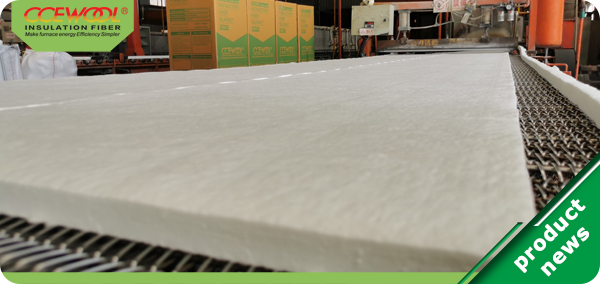The refractory fibers spraying furnace roof is essentially a large product made of wet-processed refractory fiber. The fiber arrangement in this liner is all transversely staggered, with a certain tensile strength in the transverse direction, and in the longitudinal direction (vertical downward) the tensile strength is almost zero. So after a period of production, the downward force generated by the weight of the fiber itself causes the fiber to peel off.
To solve this problem, the needling process is the most critical process after spraying the furnace roof. The needling process uses a "portable spraying furnace lining needling machine" to transform the sprayed fiber layer from two-dimensional transverse interlacing into a three-dimensional grid longitudinal interlacing. Thus, the tensile strength of the fiber is improved, which is like the refractory fibers product formed by wet method is far inferior to the strength of the needled refractory fibers blanket of formed by dry method.
Seal and heat preservation of the pipe through furnace roof. The conversion tube of the tubular heating furnace needs to withstand a certain high temperature in the furnace, and it also needs to work under frequently changing temperature. This temperature difference causes a phenomenon of expansion and contraction in the longitudinal and transverse directions of the conversion tube. After a period of time, this phenomenon of expansion and contraction creates a gap between the refractory fibers and other refractory materials around the conversion tube. The gap is also called a through-type straight seam.
Next issue we will continue to introduce application of refractory fibers in the top of tubular heating furnace.
Post time: Nov-22-2021


